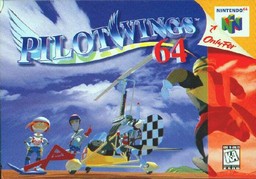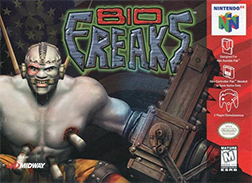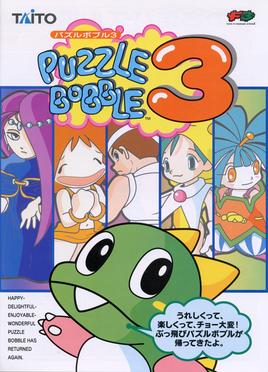
Donkey Kong 64 is a 1999 platform game developed by Rare and published by Nintendo for the Nintendo 64. It is the only Donkey Kong game to feature 3D gameplay. As the gorilla Donkey Kong, the player explores themed levels to collect items and rescue his kidnapped family members from King K. Rool. The player completes minigames and puzzles as five playable Kong characters—each with their own special abilities—to receive bananas and other collectibles. In multiplayer modes, up to four players can compete in deathmatch and last man standing games.

The 64DD is a magnetic floppy disk drive peripheral for the Nintendo 64 game console developed by Nintendo. It was announced in 1995, prior to the Nintendo 64's 1996 launch, and after numerous delays was released in Japan on December 13, 1999. The "64" references both the Nintendo 64 console and the 64 MB storage capacity of the disks, and "DD" is short for "disk drive" or "dynamic drive".

Banjo-Kazooie is a 1998 platform game developed by Rare and published by Nintendo for the Nintendo 64. Controlling the player characters, the bear Banjo and the bird Kazooie, the player attempts to save Banjo's kidnapped sister Tooty from the witch Gruntilda. The player explores nine nonlinear worlds to gather items and progress. Using Banjo and Kazooie's traversal and combat abilities, they complete challenges such as solving puzzles, jumping over obstacles, and defeating bosses.

Pilotwings 64 is a flight simulation video game developed by Nintendo and Paradigm Simulation and published by Nintendo for the Nintendo 64. It was one of three launch titles for the Nintendo 64 in Japan as well as Europe and one of two launch titles in North America, along with Super Mario 64. Pilotwings 64 is a sequel to Pilotwings for the Super Nintendo Entertainment System, which was a North American launch game for its respective console in 1991. Also like that game, Pilotwings 64 received production input from Nintendo producer and EAD General Manager Shigeru Miyamoto.

Superman: The New Superman Adventures, commonly referred to as Superman 64, is an action-adventure video game developed and published by Titus Interactive for the Nintendo 64, based on the television series Superman: The Animated Series. Released in North America on May 29, 1999, and in Europe on July 23, it is the first 3D Superman game.
Nintendo Space World, formerly named Shoshinkai and Famicom Space World, was an annual video game trade show hosted by Nintendo from 1989 to 2001. Its three days of high-energy party atmosphere was the primary venue for Nintendo and its licensees to announce and demonstrate new consoles, accessories, and games. Anticipated and dissected each year with hype and exclusivity, it was a destination for the international video game press, with detailed developer interviews and technology demos.

Tetrisphere is a puzzle video game developed by H2O Entertainment and published by Nintendo for the Nintendo 64. It was released in North America on August 11, 1997, and in PAL regions in February 1998. The game, originally titled Phear, was initially intended for release on the Atari Jaguar in early 1995 but was reworked into a Tetris game for the N64 after Nintendo, a licensee for The Tetris Company, obtained the publishing rights.

War Gods is a 3D fighting video game originally released to arcades by Midway Games in 1996. Ports for the Nintendo 64, PlayStation and Windows were released in 1997. In the game, players control one of ten fighters who have been given great power by a mysterious ore that crashed-landed on Earth from outer space. The object of the game is to defeat all the other fighters to become the most powerful warrior on the planet.

Bio F.R.E.A.K.S. is a 3D fighting video game released by Midway in 1998. It was originally planned for arcades. Prototypes of the game were tested at arcades, but the final arcade release was canceled and the game was later released for the PlayStation, Nintendo 64 and Microsoft Windows.

Fighting Force is a 1997 3D beat 'em up developed by Core Design and published by Eidos. It was released for PlayStation, Microsoft Windows, and Nintendo 64. Announced shortly after Core became a star developer through the critical and commercial success of Tomb Raider, Fighting Force was highly anticipated but met with mixed reviews.

Wheel of Fortune is an American television game show created by Merv Griffin, premiering in 1975 with a syndicated version airing in 1983. Since 1986, the syndicated version has been adapted into various video games spanning numerous hardware generations. Most versions released in the 20th century were published by GameTek, which filed for Chapter 11 bankruptcy protection in 1998.

Puzzle Bobble 3 is an action puzzle video game developed by Taito. The second sequel to Puzzle Bobble, it was released for arcades in September 1996 and later ported to the Sega Saturn, PlayStation, Game Boy, Nintendo 64 and Microsoft Windows. Like its predecessors, the player is tasked with shooting balls at groups of balls, creating groups of three or more, which are then removed from play. Further ports for the Nintendo Switch, PlayStation 4 and Xbox One were released in February 2023 by City Connection alongside Puzzle Bobble 2.

WCW Mayhem is a professional wrestling video game published by Electronic Arts (EA), based on the American promotion World Championship Wrestling (WCW). The first WCW game produced by EA, it was released for Nintendo 64 and PlayStation in 1999 and for the Game Boy Color the following year.

WWF Attitude is a professional wrestling video game based on the World Wrestling Federation released by Acclaim Entertainment in 1999 for the PlayStation and Nintendo 64. A slightly enhanced port of the game was later released for the Dreamcast, as well as a handheld version for the Game Boy Color. The game is named after the WWF's then-current "Attitude" marketing campaign, with the tagline "Get it" also being used on company programming during that period.

Dark Rift is a 1997 3D fighting video game for the Nintendo 64 and Microsoft Windows, developed by Kronos Digital Entertainment and published by Vic Tokai. It is notable for being the first N64 game to run at 60 frames per second. Dark Rift is considered the sequel to 1995's Criticom.

Dual Heroes is a fighting game for Nintendo 64. The game was developed by Produce! and published by Hudson Soft in Japan, Electro Brain in North America and Gaga Interactive Media in Europe.

NBA Jam 99 is a basketball game for the Nintendo 64 and Game Boy Color, released in 1998 by Acclaim Entertainment's Acclaim Sports label and developed by Iguana West. New Jersey Nets forward Keith Van Horn appeared on the cover. Acclaim was unable to secure the license to use Michael Jordan's name or likeness, and as such he was not available as a player for the Chicago Bulls. A player named Roster Guard is available in his place. Rosters are accurate as of July 1, 1998. The game also features Kevin Harlan on play-by-play with Bill Walton as the color commentator. The Utah Jazz' Dan Roberts provides the arena announcing.















